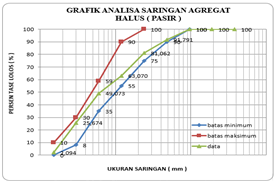Perbandingan Kuat Tekan Beton Dengan Menggunakan 4 Cara Perawatan
Comparation Compressive Strength Of Concrete By Using 4 Ways Of Curing
Keywords:
beton, perawatan, rendaman, kuat tekan, SNI 03-2834-2000Abstract
[ID] Beton merupakan material paling sering digunakan dalam dunia konstruksi, baik konstruksi bangunan maupun infrastruktur jalan. Sifat beton diketahui akan lebih baik jika kuat tekan betonnya lebih tinggi, dengan demikian mutu beton didasari oleh kuat tekan beton. Semakin besar kuat tekan beton maka semakin baik mutu beton, namun demikian mutu setiap beton sangatlah bervariasi. Hal ini dipengaruhi oleh beberapa faktor salah satunya yaitu curing atau perawatan beton. Usaha perawatan pada umumnya sering terabaikan atau kurang diperhatikan. Penelitian ini bertujuan untuk menentukan cara perawatan beton yang lebih baik. Pada penelitian ini menggunakan sampel beton berbentuk silinder, sampel dicetak dan dibiarkan dalam cetakan ± 24 jam, sampel dibuat sebanyak 36 sampel, Dalam penelitian ini perawatan yang digunakan adalah perendaman dalam air, diselimuti goni, diluar ruangan, didalam ruangan, Dilakukan analisa uji kuat tekan di Laboratorium masing-masing pada umur 7, 14 dan 28 hari, jumlah sampel pada masing-masing setiap jenis perawatan dan umur beton sebanyak 3 sampel. Analisis kuat tekan beton dilakukan dengan SNI 03-2834-2000. Hasil penelitiaan ini menunjukan bahwa beton dengan perawatan direndam dapat meningkat kuat tekan beton, sedangkan untuk beton yang didalam ruangan, diluar ruangan dapat mengurangi kekuatan tekan beton. Setelah dilakukan perhitungan dalam penelitian ini didapatkan hasil kuat tekan rata-rata beton pada umur 28 hari yang direndam diperoleh sebesar 18.05 MPa, dan selimuti goni didapat sebesar 17,67 MPa, sedangkan untuk beton yang didalam ruangan, diluar ruangan diperoleh sebesar 16,24 MPa dan 14,95 MPa, pada pekerjaan dilapangan sangat sulit mengaplikasikan jenis perawatan direndam di dalam air, maka dapat diambil jenis perawatan diselimuti goni karena memiliki nilai kuat tekan beton melebihi mutu beton rencana dibanding perawatan di luar ruangan dan di dalam ruangan.
[EN] Concrete is the most common material used in the construction world, both building construction and road infrastructure. The nature of the concrete is known to be better if the compressive strength of the concrete is higher, thus the quality of the concrete is based on the compressive strength of the concrete. The greater the compressive strength of the concrete the better the quality of the concrete, however the quality of each concrete varies greatly. This is influenced by several factors one of which is curing or concrete treatment. Nursing care in general is often overlooked or poorly cared for. This study aims to determine how better concrete treatment. In this study using cylindrical concrete sample, the sample is printed and left in the mold ± 24 hours, the sample is made as many as 36 samples. In this research the treatment used is water immersion, covered by jute, outside the room, in the room, in each laboratory at the age of 7, 14 and 28 days, the number of samples in each type of treatment and the concrete age of 3 samples. Analysis of concrete compressive strength was done with SNI 03-2834-2000. The results of this research show that concrete with soaked treatment can increase the compressive strength of concrete, while for concrete inside the room, outside the room can reduce the compressive strength of concrete. After calculation in this research got result of compressive strength strength of concrete average at 28 days soaked obtained by 18.05 MPa, and blanket goni obtained 17,67 MPa, while for concrete inside room, outside room obtained equal to 16,24 MPa and 14,95 MPa, in the field work is very difficult to apply the type of treatment soaked in the water, it can take the type of treatment covered with jute because it has a value of concrete compressive strength exceeds the quality of concrete plans compared to outdoor treatments and indoors.
Downloads
References
Dipohusodo., Istimawan (1999). Struktur Beton Bertulang Berdasarkan SK SNI T-15-1991-03. Jakarta: PT. Gramedia Pustaka Utama.
Mulyono, T., 2004, Teknologi Beton, Edisi Kedua, Andi, Yogyakarta.Tim Laboratorium Fakultas Teknik Universitas Islam Riau, 2016, Pedoman Praktikum Teknologi Bahan dan Beton, Pekanbaru.
Nilson,A., 1993. Perencanaan Struktur Beeton Bertulang, Edisi Pertama, Paramita Pradnya, Jakarta.
Nugraha, P dan Antoni., 2007, Teknologi Beton, Edisi Pertama, Andi, Yogyakarta.
SK SNI T-15-1990-03 Tata Cara Pembuatan Campuran Beton Normal.
SNI 03 – 2847 – 2002 Tata Cara Perhitungan Struktur Beton Untuk Bangun Gedung (Beta Version).
SNI 03-2834-2000 Tata Cara Pembuatan Rencana Campuran Beton Normal
Tjokrodimulyo., Kardioyono, 1992, Teknologi Beton. Biro Penerbit, Yogyakarta

Downloads
Published
Issue
Section
License

This work is licensed under a Creative Commons Attribution-ShareAlike 4.0 International License.
Copyright. This is an open access article which means that all content is freely available without charge to the user or his/her institution. Jurnal Saintis allows the author(s) to hold the copyright without restriction. The copyright in the text of individual articles (including research articles, opinion articles, and abstracts) is the property of their respective authors distributed under the terms of the Creative Commons Attribution-ShareAlike 4.0 International License which permits unrestricted use, distribution, and reproduction in any medium. Users are allowed to read, download, copy, distribute, search, or link to full-text articles in this journal without asking by giving appropriate credit, provide a link to the license, and indicate if changes were made.





